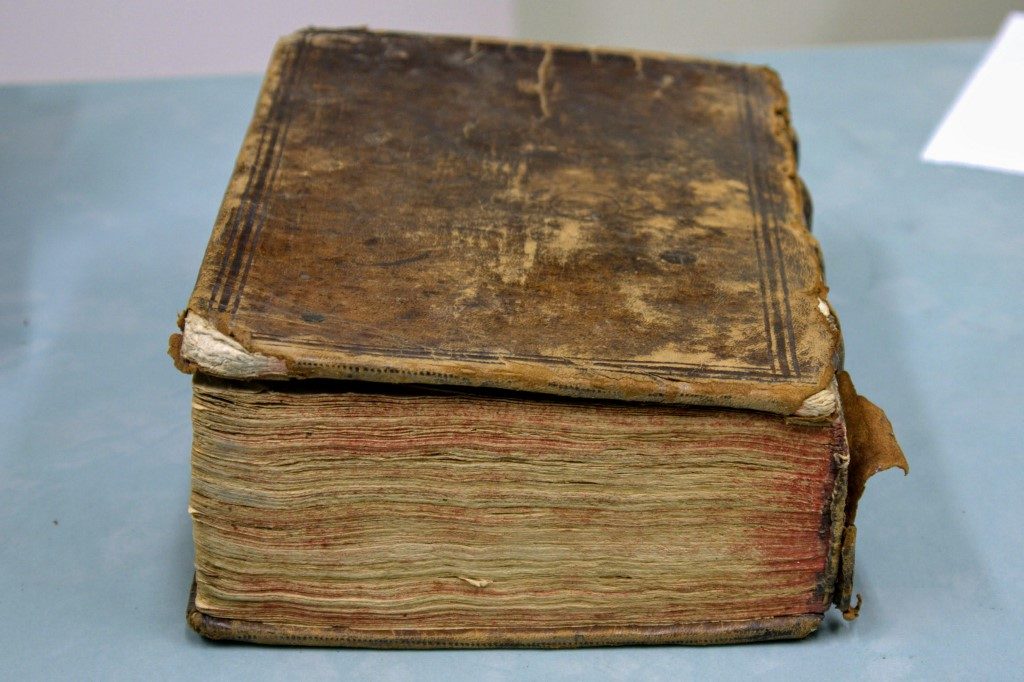SUMMARY
This is AI generated summarization, which may have errors. For context, always refer to the full article.

It was hidden away for centuries in the archives of a seminary in Spain, a rare edition of a Shakespeare play experts believe may be the earliest copy of his work to reach the country.
Published in 1634, The Two Noble Kinsmen is a tragicomedy about love, enmity, and madness written by Shakespeare in collaboration with Jacobean playwright John Fletcher.
“It’s likely the play reached Spain between 1635 and 1640,” said John Stone, a lecturer in English studies at Barcelona University who discovered it at the Royal Scots College, a seminary in the northwestern town of Salamanca founded after the Catholic Church was outlawed in Scotland.
Collections of English works were rare in Spain and plays were exceptional in the 17th and 18th centuries, with all books subjected to inspection at the frontier by the Spanish Inquisition, particularly those from a heretical Protestant state like England.
The tragicomedy was part of a single volume of 8 English plays printed from 1630 to 1635 that was likely brought over by a traveler and managed to escape falling into the hands of the Inquisition.
“I was going through the section on political economy and on the last shelf, I saw a book that was distinct in its binding from pretty-well anything else,” Stone told AFP.
Having written his dissertation on Shakespeare in Spain, he realised its importance immediately.
“I knew the moment I saw it that it was the oldest copy of Shakespeare in Spain,” said the Canadian researcher.
“The question was whether it had been the first Shakespearean text to reach Spain.”
Under nose of Inquisition
Until now, the earliest known work of Shakespeare in Spain was a compilation of plays found at the Jesuit English College in Valladolid that likely arrived in the late 1640s or early 1650s.
It was sold in the 1920s to Henry Clay Folger, a wealthy American industrialist who went on to found the Folger Shakespeare Library in Washington DC.
Clues as to when The Two Noble Kinsmen arrived lay in the margin notes made by Hugh Semple, a politically-ambitious Scottish Jesuit who was rector of the Royal Scots College.
“The handwriting tells us it arrived in Semple’s lifetime and he died in the early 1650s,” Stone said of this “highly-networked individual” who was friends with Spanish playwright Lope de Vega and known for being able to bring in English books.
His international ties were “very active” in the mid-1630s when he “would have had a great opportunity to import the book,” Stone said, suggesting it may have been brought over by a London-based Scottish aristocrat who was liaising between the English and Spanish monarchs.
Although the Royal Scots College was located in central Madrid at the time, right under the nose of the Inquisition, there was no sign its “eclectic mix of English books” was ever noticed by the Holy Office.
It is unclear whether the Shakespeare play was ever performed or used as part of the college’s curriculum although Stone said theatre was often used as part of Jesuit teaching.
Stone is now working with a book historian to see if the binding or stitching of the volume could offer further definitive clues as to when it arrived. – Rappler.com
Add a comment
How does this make you feel?
There are no comments yet. Add your comment to start the conversation.